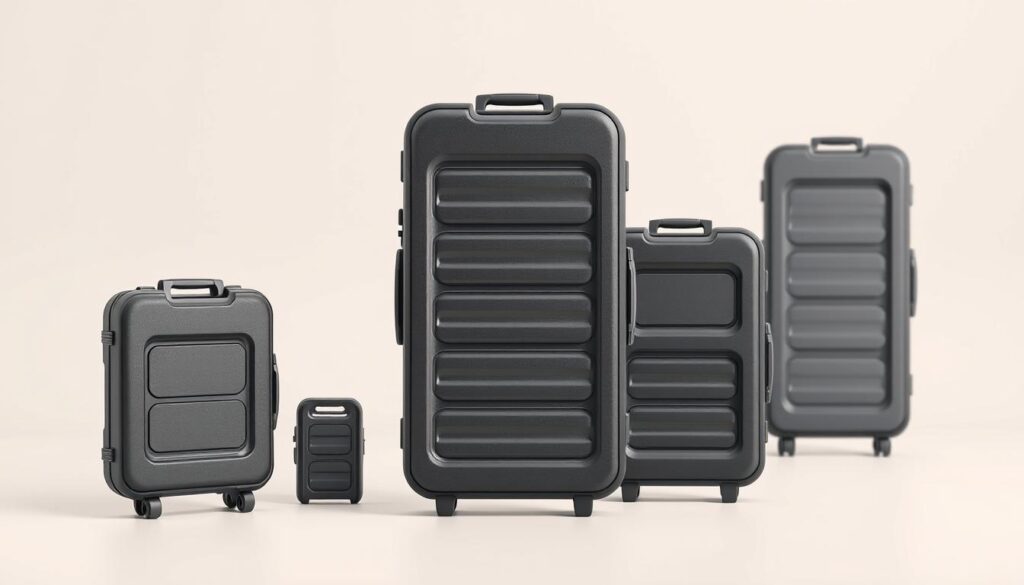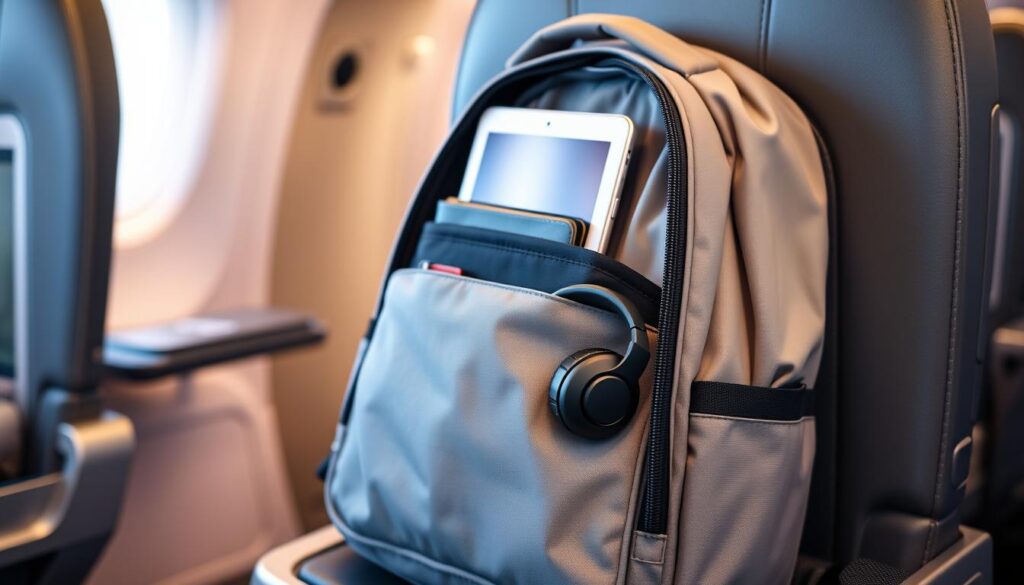What Counts as a Personal Item on Budget Airlines?
Traveling on budget airlines can be a cost-effective way to reach your destination, but understanding their policies is crucial. One key aspect is knowing what you can bring onboard as a personal item.
Almost universally, carriers allow passengers to bring a personal item like a purse, backpack, or briefcase at no additional charge. However, airline policies can vary significantly, making it essential to familiarize yourself with the specific rules of your airline.
Understanding what constitutes a personal item can help you pack more efficiently and avoid any unexpected fees at check-in. In this article, we’ll explore the ins and outs of personal items on budget airlines, ensuring you’re well-prepared for your next flight.
Understanding Personal Items vs. Carry-On Baggage
When flying on budget airlines, it’s crucial to understand the distinction between personal items and carry-on baggage. A personal item is typically a smaller bag that can be stowed under the seat in front of you, while carry-on baggage refers to larger bags that are stored in the overhead compartments.
The key difference between the two lies in their size and where they are stored on the aircraft. Personal items are usually smaller and more compact, designed to fit under the seat, whereas carry-on bags are larger and are intended for the overhead bins.
Airline policies vary, but generally, personal items are subject to more stringent size and weight restrictions compared to carry-on baggage. For instance, a personal item might be limited to dimensions such as 18 x 14 x 8 inches, while carry-on baggage might have slightly larger limits.
Understanding these distinctions is vital for packing efficiently and avoiding additional fees. By knowing what counts as a personal item versus carry-on baggage, travelers can better plan their luggage and make the most of their airline’s baggage policies.
Standard Size and Weight Restrictions for Personal Items
When traveling on budget airlines, understanding the size and weight restrictions for personal items is crucial. Personal item size restrictions are not the same on every airline, and failure to comply can result in additional fees or having to check your item.
Most budget airlines have specific dimensions for personal items, typically not exceeding 18 x 14 x 8 inches. However, weight restrictions can vary, with some airlines having no specific weight limit for personal items, while others may have strict guidelines.
Sizers at Check-in and Gates
To enforce size restrictions, many budget airlines use sizers at check-in and gates. These are metal frames that your personal item must fit into. If your item doesn’t fit, you may be required to check it or pay an additional fee.

Enforcement of size and weight restrictions can vary significantly between airlines. Some may be more lenient, while others strictly enforce their policies. It’s essential to check your airline’s policy before your trip to avoid any issues.
By understanding the standard size and weight restrictions for personal items and being aware of how airlines enforce these policies, you can better prepare for your trip and avoid any unexpected fees.
What Counts as a Personal Item on Budget Airlines?
To pack smart and avoid additional charges on budget airlines, it’s essential to know what is considered a personal item. Most airlines consider a small backpack, purse, briefcase, or laptop bag to be a personal item, provided it fits under the seat in front of you.
Backpacks and Small Bags
Backpacks are a popular choice for a personal item due to their versatility and capacity. When selecting a backpack as your personal item, ensure it’s compact enough to fit under the seat in front of you. A small bag with dimensions around 18 x 14 x 8 inches is typically acceptable.

Purses and lap laptop bags are also commonly accepted as personal items. These bags are usually designed to be compact and can easily fit under the seat. When choosing a purse or laptop bag as your personal item, consider its size and ensure it complies with the airline’s dimensions.
Understanding the types of bags that qualify as personal items on budget airlines can help you pack more efficiently and avoid extra fees. Always check with your airline for their specific policies regarding personal items.
Personal Item Policies by Major Budget Airlines
Major budget airlines have different rules and regulations regarding personal items. Understanding these policies is crucial to avoid extra fees and ensure a smooth travel experience.
Spirit Airlines, for example, includes a personal item in its ticket prices, but charges extra for carry-on baggage. The airline has a range of fees for carry-on bags, depending on when they are purchased.
Personal Item Allowance Across Airlines
Different budget airlines have varying policies regarding personal items. For instance, some airlines allow a personal item and a carry-on bag, while others may charge for both.
| Airline | Personal Item Allowance | Carry-on Fee |
|---|---|---|
| Spirit Airlines | 1 personal item | $37-$65 |
| Frontier Airlines | 1 personal item | $35-$55 |
| JetBlue | 1 carry-on, 1 personal item | $0 (free) |

When choosing a budget airline, it’s essential to consider their personal item policies to avoid any surprises at check-in. By understanding the policies and fees associated with carry-on baggage, travelers can make informed decisions and pack accordingly.
Comparing Airline Policies
Comparing the personal item policies of different budget airlines can help travelers choose the best option for their needs. Some airlines may offer more generous allowances or lower fees, making them a more attractive choice.
By considering these factors, travelers can ensure a hassle-free experience when flying with budget airlines.
Exceptions and Special Cases
Understanding the exceptions and special cases for personal items on budget airlines can make a significant difference in your travel experience. Most major US carriers don’t count kid-specific items such as diaper bags, strollers, and car seats as a personal item. This policy can be a huge relief for parents traveling with infants or toddlers.
In addition to kid-specific items, some airlines also make exceptions for mobility devices. For instance, wheelchairs and mobility scooters are typically handled differently than standard personal items. It’s essential to notify your airline in advance if you plan to travel with such devices, as they may have specific procedures for handling and storing them on board.
Duty-free purchases are another area where exceptions may apply. Many airlines allow passengers to carry duty-free items on board in addition to their personal item, but this can vary. It’s always a good idea to check with your airline before making any purchases at airport duty-free shops.

To avoid any issues during your travel, it’s crucial to familiarize yourself with your airline’s policy on exceptions and special cases. By doing so, you can ensure a smoother and more enjoyable journey.
Tips for Maximizing Your Personal Item Allowance
To make the most of your personal item allowance, it’s essential to pack smart. Utilizing the right luggage and packing techniques can significantly enhance your travel experience.
One effective strategy is to use compression bags and stackable luggage. Compression bags can help reduce the volume of your clothing and other items, allowing you to fit more into your personal item. Stackable luggage, on the other hand, enables you to organize your belongings efficiently, making the most of the available space.
Structured vs. Soft-Sided Options
Choosing between structured and soft-sided bags depends on your specific needs. Structured bags offer more protection for your belongings and can help maintain their shape, while soft-sided bags provide flexibility and can be squeezed into tight spaces.
Expandable Designs
Another useful feature to consider is expandable designs. Bags with expandable sections can provide additional space when needed, allowing you to bring more items without exceeding the personal item allowance limits.
By incorporating these tips into your packing routine, you can maximize your personal item allowance and enjoy a more convenient and stress-free travel experience.
Conclusion
Traveling on budget airlines can be a cost-effective way to reach your destination, but it requires a clear understanding of their policies, especially when it comes to personal items. As discussed, the distinction between a personal item and carry-on baggage is crucial, and knowing the size and weight restrictions can save you from unexpected fees.
Major budget airlines have varying policies regarding personal items, and being aware of these differences can help you pack accordingly. By understanding what counts as a personal item and how to maximize your allowance, you can avoid checked-bag fees and enjoy a smoother travel experience.
In conclusion, being informed about budget airlines’ personal item policies is essential for travelers. By knowing the rules and packing smart, you can make the most of your trip without breaking the bank or dealing with unnecessary stress. Whether you’re a frequent flyer or an occasional traveler, understanding these policies will help you navigate the world of budget airlines with confidence.
